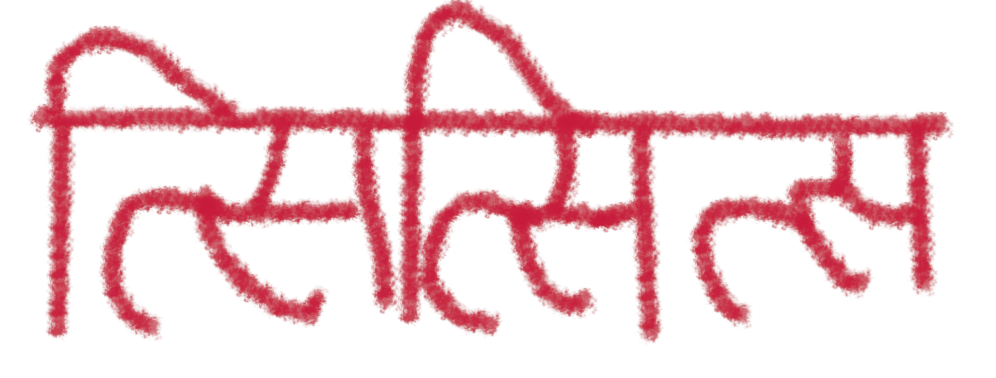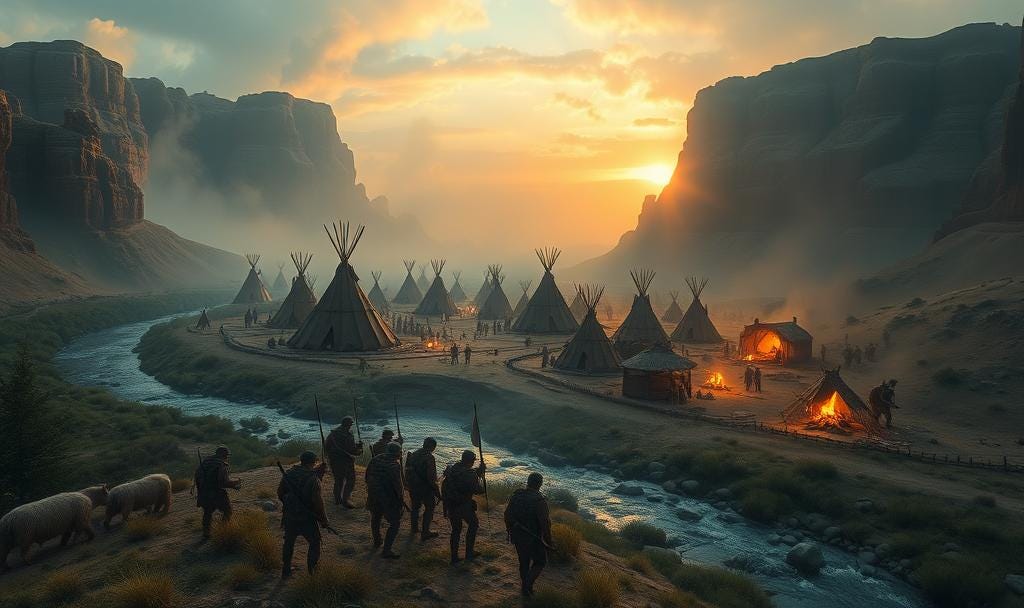Custer's Avengers
Powder River Defeat of Cheyenne, Sioux - 1876

Introduction
The Great Plains tribes Cheyenne and Sioux fought the Americans in the 1800s.
After the Sioux Cheyenne force brought Armstrong Custer and his force down in the Battle of Little Bighorn, the military responds by sending General Crook and Colonel Mackenzie.
The stories of the Sioux and Cheyenne are available https://crackpot.substack.com/t/sioux
Theatre
[1] General Ranald Slidell Mackenzie leads a column into the Big Horn Mountains and attacks a Cheyenne village with Chief Morning Star (Dull Knife) and Little Wolf.
Operating under orders from Brigadier General George Crook, Colonel Ranald S. Mackenzie struck the large Cheyenne village… on the canyon floor at dawn in late November, charging in from the east with 1,100 men and driving the occupants from their lodges… the attack on the camp and its destruction compelled the Cheyenne eventual surrender, and discouraged their Lakota allies, like Crazy Horse.’ - Greene. Introduction.

Some scouts climbed atop a high red sandstone butte on the north side of the creek overlooking the village. From there they fired on the Cheyenne… - Greene. pg. 109
[1] The attack on Black Star’s camp is devestating to the Cheyenne. The soldiers burn everything, leaving the Cheyenne to face winter destitute.
Powder River War Parties
[1]
“The last time I ever saw Red Ripe, he was lying dead in the snow.” - Iron Teeth. Wife of Red Ripe and Red Fork massacre survivor.
[2]
General Crook and General Sheridan butted heads.
Crook was not without his critics. Crook kept his own counsel and was an advocate of fighting fire with fire - using native warriors to fight warriors - after his success with the Apache. At the time of Powder River in 1876, Crook had not yet been burned by the Cibicue Mutiny of 1881, when Apache scouts turned and killed their U.S. paymasters. Here Arapaho, Sioux and Cheyenne scouts served with the American military - impressed into service with their families effectively held prisoner at agency land to compel loyalty.
[3]
Young Two Moon and 20 warriors, all sporting war bonnets, executed a maneuver to save five men trapped behind a low ridge in front of the soldiers’ position. They cried charge and led… the troops move and the five trapped warriors - Long Jaw, Little Horse, Braided Locks, White Horse and one more - escaped. - Greene pg. 134
[4]
Pawnee, Shoshone, Crow and Utes were all tribes that had at one time fought against the Americans, been defeated, and were now aligned in the fight against their traditional enemies Sioux and Cheyenne.
[5]
“Bull Hump killed a horse along the washout and cut free one of the saddlebags, which was full of ammunition. As Bull Hump started away with his prize, jumping from side to side to avoid the soldiers’ fire, he came on two revolvers, which he thrust between his belt. Now weighted down with his cargo of rifle, pistols, saddlebag full of ammo, Bull Hump was forced to walk amid the bullets. Miraculously, he was not hit. The Cheyenne attributed it to all the gun smoke hanging over the canyon.” - Greene pg. 13.
[6]
The Shoshone Chief Washakie has quite a history - including ties to frontier person Jim Bridger.
[7]
“While Box Elder’s pipe burned mysteriously, Long Jaw, bedecked in a red cloth, ran along a ridge to the northwest with a dog. Long Jaw jumped about for one hundred yards, drawing fire before he ducked down. After the fight, the Cheyennes noticed Long Jaw’s red cloth was full of bullet holes.” - Greene pg. 130.
[8]
Roman Nose and Crazy Horse are ubiquitous in mid-to-late 19th century Sioux war.
Crazy Horse drew Fetterman out into the plains in the Battle of the Hundred Slain.
Roman Nose fell at Beecher Island in Colorado.
[9]
Before fighting with the Sioux, General Mackenzie made a name for himself fighting the Comanche.
[10]
Nelson Miles took part in the Red River War.
[11]
General Crook won an illustrious reputation by defeating the Apache.
[12] General Crook lost a fight with the Sioux at Rosebud River.

We The People
“The Cheyennes, or Tsitsitsas (“The People”), were an Algonquian speaking tribe who migrated from the western Great Lakes to the buffalo prairies east of the Missouri River by the late seventeenth century.” - Greene pg. 45
In this regard the Cheyenne are similar to the Apache, whose term tinneh that is at the root of all Apache self-descriptives, and where tinneh means ‘the people.’ As well as The Comanche ‘Nerm’ or ‘Nim’-ma, that means ‘the people.’
The Navajo too, whose word for people and themselves was ‘the dine’. Per Hampton Sides, author of Blood and Thunder, the Navajo are also similar to the Apache, the Navajo saw themselves as a chosen people, with special relationship to the Gods. Sides sees the Navajo as the most “American” tribe, in that they are “immigrants, improv artists, and mongrels.”
An odd sentiment, but resonant. Of mixed, negligible ancestry, a traveler and finding many native words much easier to read/remember phoneticized as Sanskrit rather than roman English. Like Arivaipa (the site of Grant Massacre).
Defeated by Supply Chain Logic
[1] It was game over just 6 months after the great triumphs of Little Big Horn where Custer fell and General Crook’s defeat at Rosebud. Mackenzie’s attack on the Cheyenne village is a backbreaking moment for the Cheyenne and Lakota Sioux. Why?
Similar to the Salt River Cave Battle that broke the Apache and the five-column assault into the Llano Estacado led by Mackenzie against the Comanche. Many tribes like the Cheyenne, Sioux, Comanche and Apache were indomitable, implacable and recalcitrant 100% right up until they were not. In all cases, a single attack on a previously impenetrable stronghold is what suddenly won the war after decades of war and aggression. Why?
The warriors knew American power was great. They knew behind men like Crook, Sherman, Sheridan, Mackenzie or Custer there were other men, far west in a place called Washington. While those men in Washington could direct the Generals to penetrate their homeland from far away, the warriors could not think of doing the same in return. Though they could defeat any white man hand to hand, it was unthinkable for them to be able to lead a war party to Washington.
Ok. Why not Sand Creek? Camp Grant? These were not stronghold locales - they were liminal places - way stations. Black Kettle’s camp was on the way to the agency when camped at Sand Creek. The Aravaipa camp at Grant was similarly located.
All it took was a single demonstration of capability to attack what was once thought to be an impenetrable stronghold for native resistance to collapse. Literally in a single stroke. For the people, their sense of peace and security was shattered after the first attack. After that, as the Apache Delshay cried, they could not sleep even if a ‘coyote kicked a rock’ they bolted out of bed with guns drawn for fear it was an attack. No rest no peace. So too their will to fight went like that. The warriors as fierce and capable as they were, were men. The so-called war culture, they were not fighting to prove how fierce or strong they were - the fight was over their way of life. Once proven gone, they went with the next current. The men knew in a surprise attack that they could fight and maybe get away, but with all their homes burnt, women and children left behind killed or captured, and livestock run off - there was nothing to win in those conditions.
After the first big break in resistance holdouts could remain for a long time. It was over a decade aver the Salt River Cave Massacre before the last of the Apache made peace. The native wars are marked by singular moments of defeat, a point of no return and critical mass. After such moments 80-90% of the defeated people came in to sue for peace of some term and condition.
Geronimo wiped his forehead, “Oh my God.”
“You got any whiskey?”, he asked Lieutenant Gatewood at the moment of surrender.
References
Greene, Jerome A. Morning Star Dawn : The Powder River Expedition and the Northern Cheyennes, 1876. Norman, University Of Oklahoma Press, 2003.
White, Lonnie J. Hostiles and Horse Soldiers. 1972.
Monnett, John H. The Battle of Beecher Island and the Indian War of 1867-1869. 1992.
Mcdermott, John. Circle of Fire. S.L., Stackpole Books, 2020.
Sides, Hampton. Blood and Thunder. Anchor, 9 Oct. 2007.



















